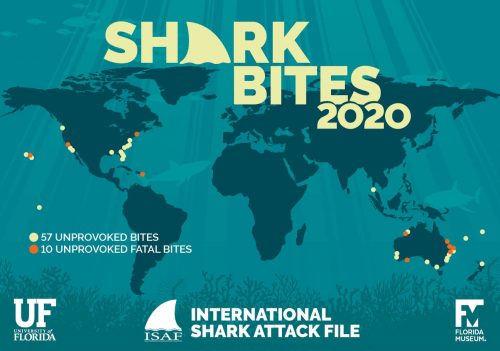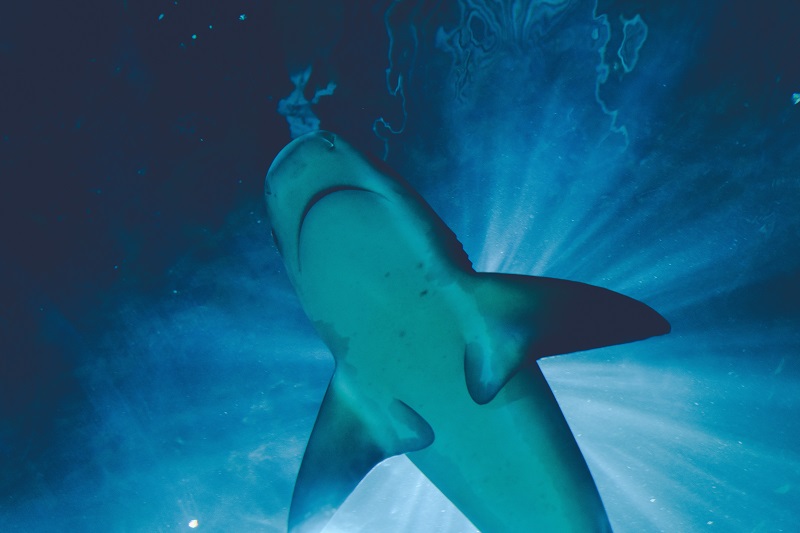Under a Moon Spell: Shark Attacks Related to Lunar Phases
January 11, 2022

Map of all 2020 Shark Bites from the International Shark Attack File's 2020 Annual Report
– International Shark Attack File
BATON ROUGE—New research from LSU and the University of Florida suggests that more shark attacks occur during fuller phases of the moon. While the exact cause remains unclear, the researchers found that more shark attacks than average occur during periods of higher lunar illumination and fewer attacks than average occur during periods of lower illumination. Many different types of animals show behaviors that are linked to moon phases, yet few studies to date have looked at the connections between lunar phases and shark attacks.
What makes this research important is the abundance of data they analyzed. Their findings are based on a global shark attack record collected during a 55-year period from 1960 to 2015 from the International Shark Attack File housed in the Florida Museum of Natural History at the University of Florida. Being able to crunch numbers for shark attacks across the globe and over the course of decades revealed a clear correlation between lunar phases and shark attacks, although the reasons why remain unknown.
“It’s not a matter of more light at night for sharks to see. Most shark attacks occur in the daylight. However, the moon can exert other forces on Earth and its oceans in ways that are much more subtle—for example, the gravitation pull that we see affect

the tides,” Steve Midway, LSU associate professor and researcher on the project said. His combined expertise in fisheries ecology and statistical analyses in the College of the Coast & Environment’s Department of Oceanography & Coastal Sciences allowed him to add a unique perspective to this research.
The scientists say it is still too early to demonstrate that lunar illumination is a causative factor for shark attacks. However, their new data serves as a building block towards better understanding shark attacks and could be useful for developing recommendations for water-based recreational activities in the future.
“The abundance of data we have would suggest that there is something there that’s worth continuing to look at,” Midway said.
Read the full paper in the journal, Frontiers in Marine Science.
-30-
Contact Christine Wendling
LSU College of the Coast & Environment
225-578-4984
christinew@lsu.edu